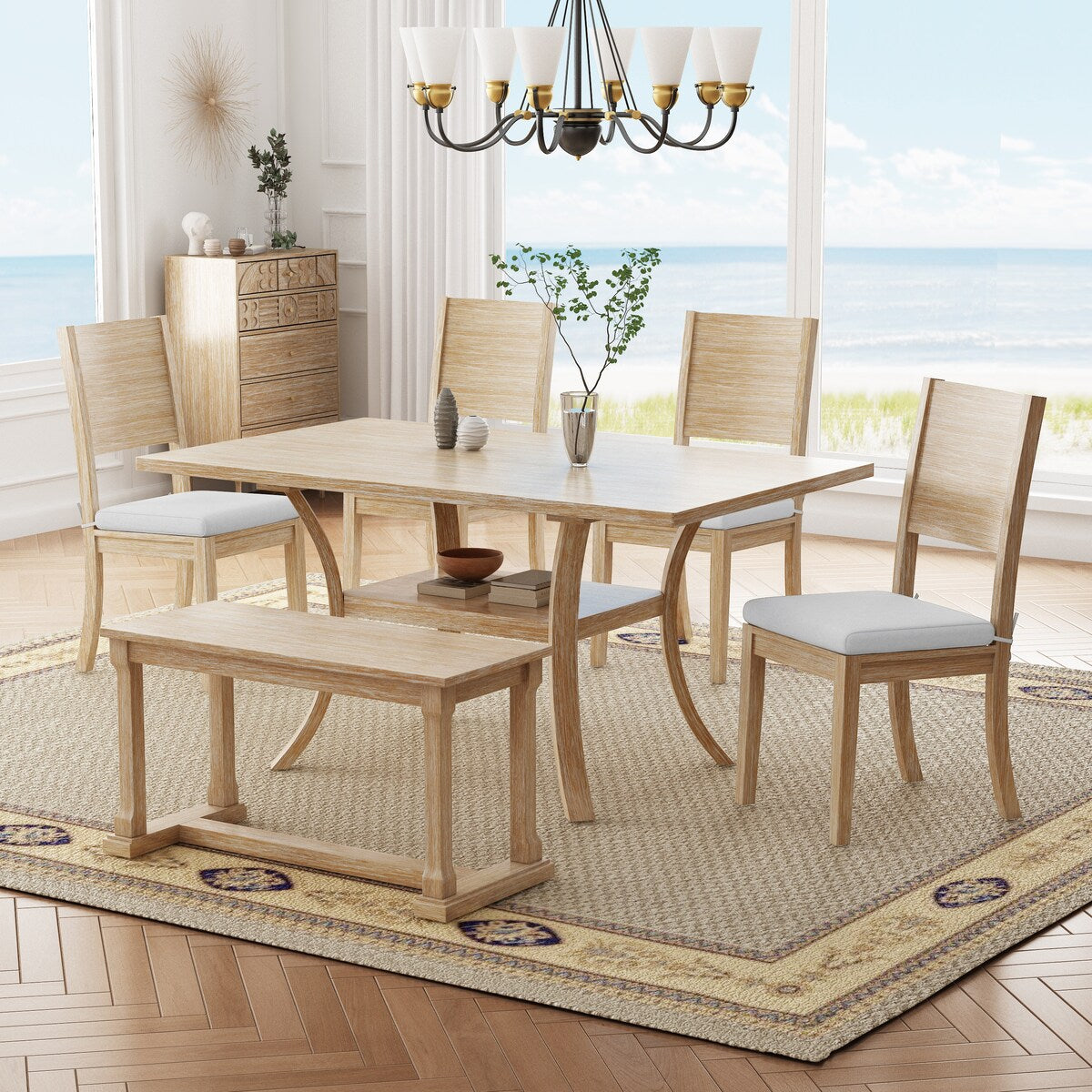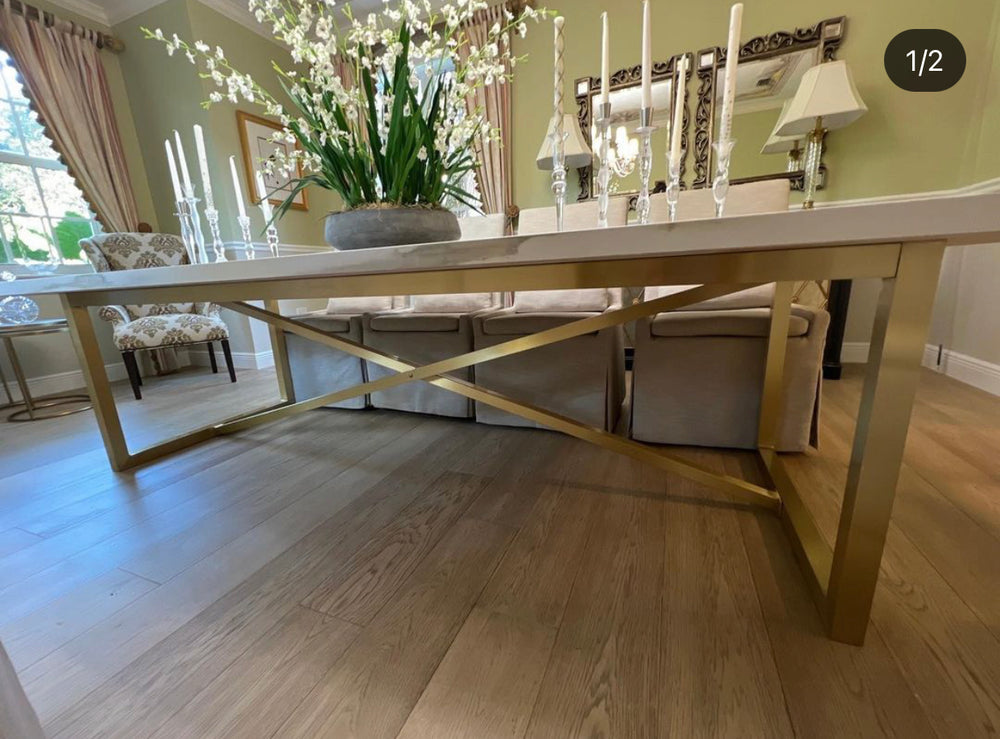Why Dining Room Table Legs Are Crucial for Your Table’s Stability
Why Dining Room Table Legs Are Crucial for Your Table’s Stability
Blog Article
From Standard to Modern: Discover the Suitable Dining Area Table Legs for Your Style
While traditional designs such as cabriole and transformed legs stimulate a feeling of timeless refinement, modern designs like hairpin and geometric options provide a chance for striking visual interest. As you consider these elements, the question remains: how can you flawlessly integrate these varied leg designs to create a harmonious eating experience?
Recognizing Table Leg Styles
The range of dining-room table leg styles can considerably affect both the appearances and performance of the area. Each leg style contributes unique visual components and functional functions, dealing with varied design choices and usage requirements. Understanding these designs is critical for selecting the best dining table that aligns with your general indoor layout vision.
As an example, conical legs offer a clean, classic look that can improve a space's beauty, while pedestal bases supply security and make best use of legroom, making them optimal for smaller sized areas. Hairpin legs, a trademark of mid-century modern-day style, present an industrial flair, enabling an airy, open feel. Trestle legs stimulate rustic appeal, supplying robust support and a feeling of eternity.
Wooden legs can bring heat and texture, whereas metal alternatives typically share a streamlined, contemporary ambiance. Ultimately, understanding table leg designs is vital for creating a cohesive dining area that shows personal style while making sure functionality and comfort.
Typical Table Leg Options
When picking dining space table legs, conventional alternatives usually symbolize ageless style and workmanship. These layouts mirror a rich heritage and a dedication to quality, making them perfect for those who appreciate timeless looks.
One of one of the most legendary standard leg designs is the cabriole leg, identified by its stylish rounded shape. This layout usually features attractive makings and is most commonly located in Queen Anne and Chippendale furnishings. Another popular alternative is the turned leg, which boasts a collection of smooth, rounded forms that provide a traditional appearance while keeping stability.
In addition, the straight leg, while straightforward, offers a unadorned and durable framework that can mix seamlessly with a range of tabletop designs. For those drawn to ornate detailing, claw-and-ball feet legs stimulate a sense of majesty and can work as a spectacular focal point in any kind of eating area.
Lastly, stand bases, although not strictly legs, supply an alternate standard alternative that permits ample legroom and can be wonderfully carved. Each of these conventional leg designs adds to the total atmosphere of a dining-room, marrying feature with visual charm.

Modern Table Leg Styles
Modern table leg styles provide a varied array of styles that highlight innovative products and clean lines. These designs commonly focus on performance while functioning as striking focal factors within a dining area. Minimal aesthetics prevail, with legs crafted from materials such as steel, glass, and crafted timber, which contribute to a airy and contemporary feeling.
One preferred design is the barrette leg, defined by its slender, conical framework that provides security without frustrating the tabletop (dining room table legs). This design is commonly found in mid-century modern-day furniture and can effortlessly match various table shapes. Another fad is making use of geometric forms, where legs might tackle angular or asymmetrical types, adding aesthetic rate of interest and a touch of artistry

Blending Styles for Unique Areas
Often, property owners this post look for to produce special dining rooms that show their personal design by blending numerous layout elements. This approach permits the unification of diverse aesthetics, resulting in a harmonious yet unique environment. Matching a rustic wooden table with sleek, modern metal legs can develop an appealing contrast that boosts the space's total charm.
Additionally, incorporating vintage table legs with modern table tops can evoke a sense of history while preserving a modern-day perceptiveness. Such mixes not only showcase individual taste however likewise encourage imagination, enabling property owners to curate an area that feels both individual and inviting.
Shade plays a crucial role in this blending process; selecting table legs that complement or comparison with the existing shade plan can enhance aesthetic rate of interest. Whitewashed legs can soften the boldness of a dark table surface, creating a balanced visual.
Tips for Picking the Right Legs
Choosing the right table legs is crucial for accomplishing both performance and visual charm in your dining room. Begin by considering the overall design of your space. Standard settings gain from legs that feature complex makings or turned layouts, while contemporary spaces may require streamlined, minimalist styles.
Following, evaluate the height and stability of the legs. dining room table legs. Conventional eating tables vary between 28 to 30 inches in elevation, so make sure the legs match this measurement for convenience. In addition, durable products, such as wood or steel, can boost stability and durability
Review the leg form also-- choices consist of right, tapered, or pedestal designs. Straight legs use a timeless appearance, while tapered legs can add a touch of sophistication. Pedestal bases supply ample legroom and are optimal for smaller sized rooms.
Conclusion
In summary, picking the suitable eating space table legs requires cautious consideration of both typical and modern designs. By balancing leg style, elevation, and product with the total decoration, a cohesive and welcoming environment can be accomplished.
The variety of dining room table leg styles can substantially affect both the visual appeals and capability of the space. Ultimately, understanding table leg designs is crucial for developing a cohesive eating location that shows individual style while making site web sure usefulness and comfort.One of the most famous typical leg styles is the cabriole leg, defined by its stylish curved form. Straight legs use a classic appearance, while conical legs can add a touch of beauty.In recap, selecting the optimal dining area table legs needs mindful consideration of both contemporary and conventional article designs.
Report this page